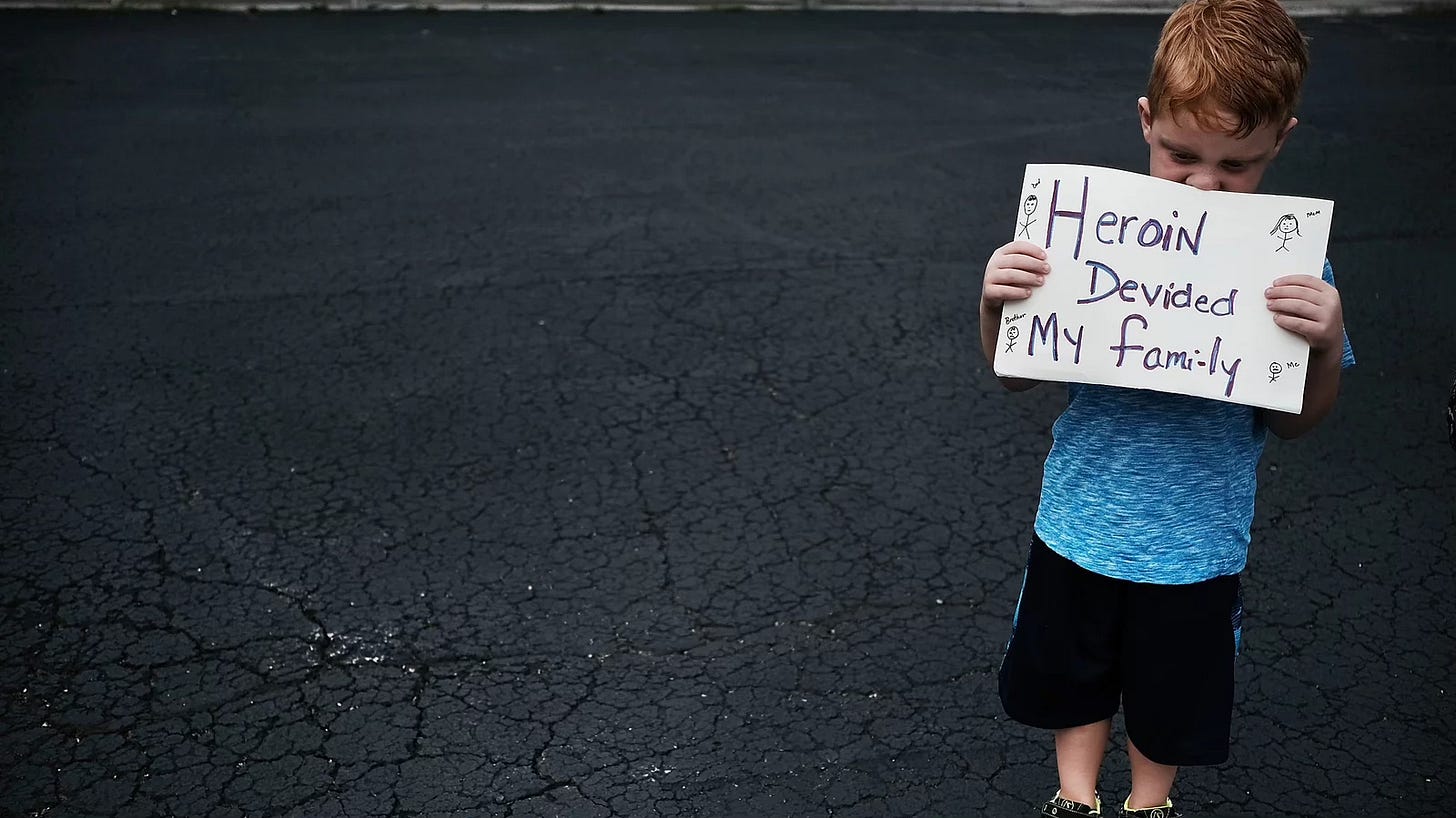Looking for a Way Out of the Opioid Crisis
The Damage From the Opioid Epidemic in Rural Communities Will Last for Years
Over the course of a single year (2015), enough opioids had been prescribed in the United States to keep every single American medicated 24 hours a day for three weeks straight.
Beginning in the 1990s, we experienced a “multi-system failure of regulation” where pharmaceutical companies encouraged – and even incentivized – doctors to start prescribing the then-brand new opioid painkiller, OxyContin.

Because the industry itself – not outside regulators – advises doctors on evaluating and mitigating the risk of these drugs, pharmaceutical execs had free rein to prioritize profits over public health. Purdue Pharma, owned by the secretive billionaire Sackler family, pushed the use of the drug for a growing number of less serious conditions and marketed it as less addictive than other types of pain medications.
Needless to say, addiction and abuse of prescription opioids increased over the last two decades and then began to fuel an inevitable explosion of abuse of its illegal counterparts like heroin. Most recently, the rise of powerful synthetic opioids such as fentanyl entered the drug market and increased the death toll even higher.
And throughout it all, rural communities have been bearing the brunt of this addiction.
In California, Connecticut, North Carolina, Vermont, and Virginia, drug overdose deaths were significantly higher in rural counties than urban ones. Across the region of Appalachia, the rate of fatal overdoses was 72% higher there than in non-Appalachian counties by 2017.
One national survey even found up to 74% of farmers say they’ve been personally affected by the opioid crisis. The greed-fueled opioid crisis has even touched three out of every four farmers in this country.
After over a half a million overdose deaths since 1999, far too many families and communities have struggled to recover from those losses. And that damage will take years to heal – if it ever does at all.
For now, what we do know is that it’ll take decades of deliberate and compassionate policy decisions to try to undo the destruction opioid addiction has caused in our rural communities and tribal lands and to prevent future tragedies.
GO DEEPER
The opioid crisis in rural America has taken a dark turn over the last five years as synthetic Fentanyl has flooded small towns with a deadly wave of overdoses. Although recent developments hint that we may be turning the corner on this crisis, there is significant work still to be done.
Regina LaBelle from the O'Neill Center, Dale Kind from Small Town Strong, and Lisa Bright from the Bright Foundation joined the 2024 Rural Progress Summit to discuss the impact of overdoses have had in rural communities and what we can do to finally turn the corner on the opioid crisis.
SOUND OFF
Has your community been impacted by opioids? Tell us about it. Email: podcast@onecountryproject.com and your feedback could be on an upcoming episode of The Hot Dish.




